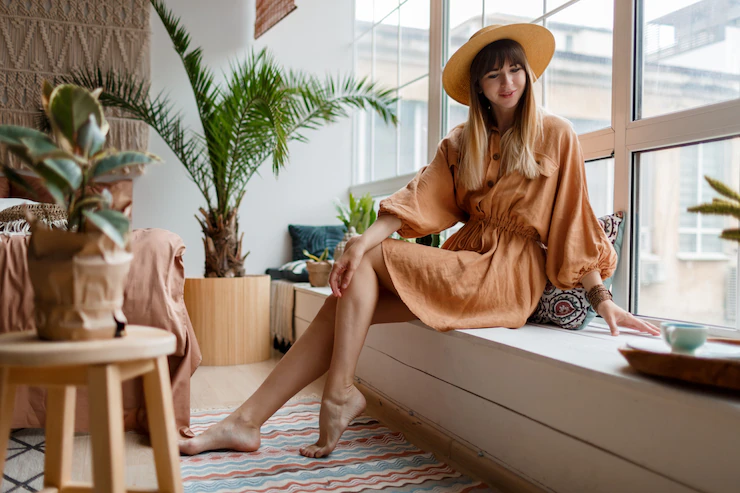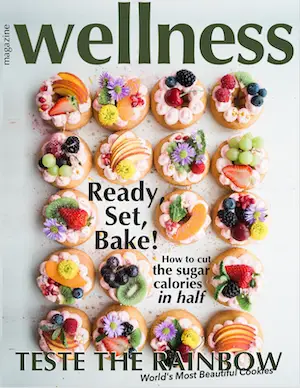Sociobiologists tell us that buried deep inside us, we all have compelling urges related to survival. Nearly everything we do and every decision we make is related to these survival instincts. It’s in our DNA. You think you choose colors that make you look good. You think you choose what you wear based on the results in the mirror. You don’t. Your color and fashion choices resonate from the depths of your primitive DNA. Your decisions about what you wear are based on the most basic survival instincts.In other words, you dress to be safe. Figuratively speaking, when you leave the cave each morning, you dress to keep dangerous predators from noticing you. We do it all over the world:
· Big city inhabitants dress in the dark colors of tall skyscrapers.
· In the South, everyone wears floral prints and pastels.
· People in the Midwest adorn themselves in earthy tones.
· In the Southwest, desert colors like terracotta and mustard yellow prevail.

It isn’t confined to colors. Abraham Lincoln wore a stovepipe hat so he would blend in with the skyline that was dotted with stovepipes. Houses were heated with coal in that era, so it was a safe “camouflage.”
Modern-day image and color consultants compound the error of our ways. Color analysis burst on the scene in the 1980s and every book on the subject promised to make getting dressed easier. They did. You simply wore colors that matched your personality or your superficial appearance – specifically your hair and eye color.
They also promised to make you look better. In retrospect, a few people did. However, for most, it caused confusion and didn’t work. Redheads weren’t certain whether they were Autumns or Springs. A myriad of blondes from New York City and Paris noticed that they could wear black, contrary to what all the “experts” said. A great many people wondered why every season could wear one or two identical colors.
Yet, the color concept caught on, because at a certain level, it made us feel smug. “I knew it,” said all the redheads. “Rust, coral and camel are my colors!”
Blondes read it and smiled. “Yes, I’ve always known pastels were for me; especially blush pink.” Sandy-haired men confirmed that their light brown suits were better than navy blue or black.
Raven-haired beauties read that they were among the few who truly looked good in black, so they were especially smug. They knew it all along.
In reality, dressing to match the superficial appearance feels safe, because we don’t stand out too much. It seems so natural, and no wonder. We’re simply doing what our primitive ancestors have always done.
The truth is, it’s a terrible way to choose colors for yourself. Today’s “survival” is different from our cave dweller days. Today, survival depends on being noticed. If you’re applying for a job or vying for a promotion, you need to stand out from the competition so you’ll be remembered.
Because there’s so much confusion out there, here are a few tried and proven methods for looking memorable and attractive:
· Avoid drab colors. They make you look drab. This includes moss green, mustard yellow, most beiges and browns, and drab shades of teal and burgundy.
· The majority of people look better in cool colors than warm ones. Wear cool navy blue suits instead of warm brown or beige ones, for example.
· Primary colors suit the majority of people. Wear black, navy & charcoal for men’s suits. These colors suit women also, but they can also consider jewel tones. Remember, food colors like lemon, lime, orange and pea green are warm and less classy than cool jewel tones such as ruby, emerald, amethyst, sapphire and magenta. Men: wear ties in bold colors like reds, violets and gold or yellow tones.
· Tailored garments look more powerful and professional. Men: make certain your suit and shirt collar do not pull away noticeably at the neck. Women: avoid garments that are shapeless and made of limp fabrics.
· Women: Experts agree that professional makeup gives you more credibility and clout. It also gets you 17% higher income. Avoid brown lipstick, black eyeliner that looks too Goth, garish eye shadow colors like turquoise, blue and green. Monochromatic shades of brown look more sophisticated and professional.
· Good grooming is important. Avoid wrinkled shirts, unkempt hair and dated hairstyles, scruffy shoes, dirty nails.
These days, there aren’t any ferocious predators lurking at our doorsteps, so it’s okay to stop dressing to look invisible. We don’t need to match our superficial appearance. We don’t need to match our surroundings either. That means it’s okay to say “no” to grey-toned or colorless garments in the “colorless” winter.
On the other hand, we needn’t wear neon or acid colors in the spring either. Tulip yellow, lime green and bright orange are among the most difficult colors to wear. Emerald green and fuchsia are more flattering tones, even if they aren’t seen until summertime.
Summer is, in fact, the season with the most flattering colors. They’re also the scariest colors to our DNA’s ancient survival mode. Colors like peacock blue, Chinese blue, royal blue, bright emerald green, red, purple and red violet.
The brightest season of the year has the brightest colors. Perhaps kindly Mother Nature, knowing of our fear of bright colors, gave us one moment in time to express our innermost feelings of joy by wearing bold and exciting colors.
Colors reflect moods; that’s been known for centuries. If you want to know the power of colors, ask a psychiatrist, not a stylist. Release yourself from outdated urges and think like a brand. Powerful brands don’t come packaged in plain brown wrappers, do they?
You do know the colors you look good in. You’ve just sabotaged yourself for the best of all reasons: survival. In this century, the dress code for survival is different. Survival in a competitive market demands that you walk into a room and own it. You won’t do that in boring beige.
About author
Sandy Dumont is a certified image consultant with 30 years experience working with Fortune 500 companies and their staff. She has spoken on three continents and has produced numerous books and DVDs. Her latest publication “Color Me Correctly, Please” will be released Spring 2013. Contact her at www.theimagearchitect.com.




